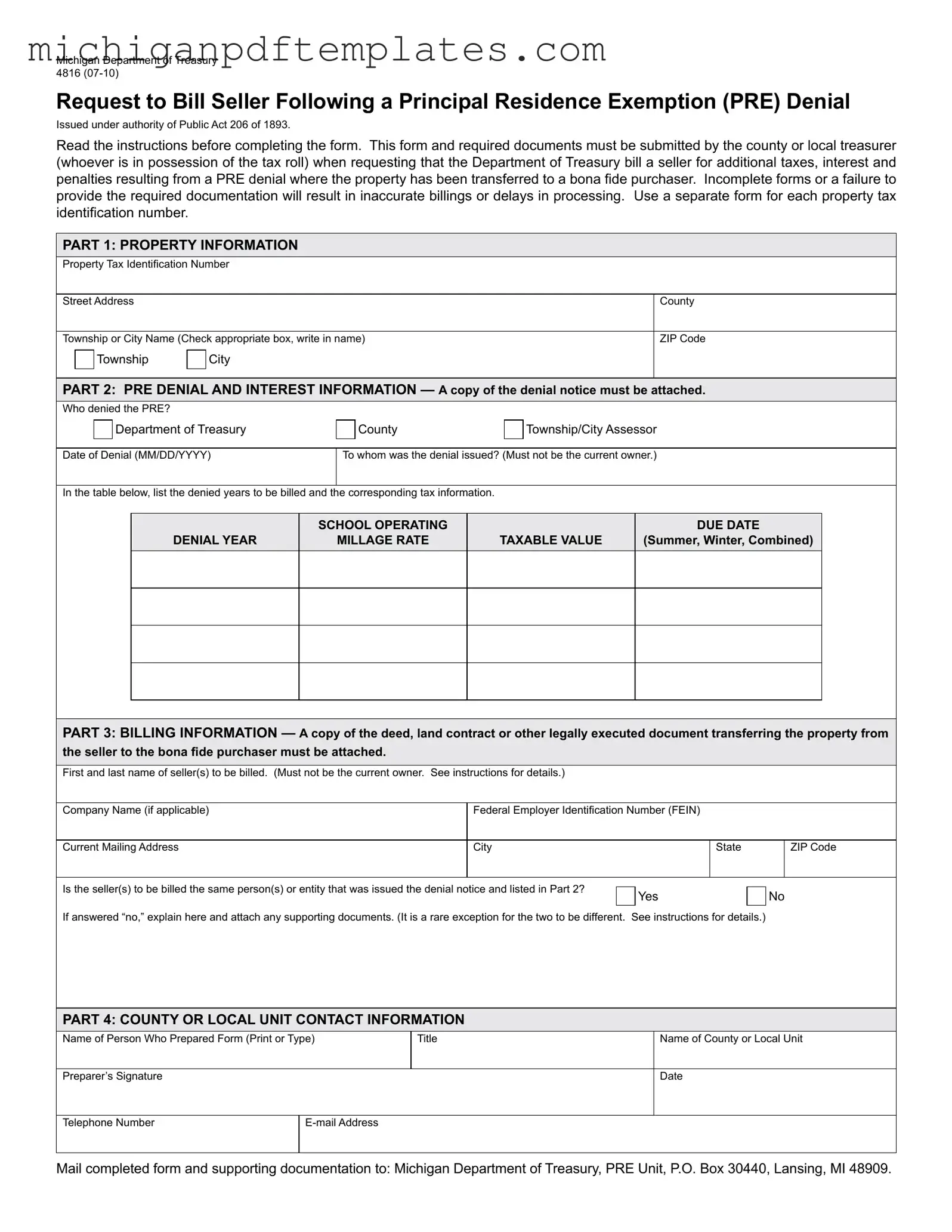1. The Michigan 4816 form is only for homeowners. This form is actually used by county or local treasurers to bill sellers for additional taxes after a Principal Residence Exemption (PRE) denial.
2. Only the current owner can be billed for taxes. In fact, the seller who received the PRE denial is the one responsible for the additional taxes, not the current owner, if the property was transferred to a bona fide purchaser.
3. You can submit one form for multiple properties. Each property tax identification number requires a separate form. This ensures accurate processing for each property.
4. You don’t need to attach any documents. Required documents, such as the denial notice and the deed or land contract, must be attached. Failure to do so can cause delays or inaccurate billing.
5. The PRE denial is automatically removed upon property sale. The PRE is not removed in bona fide purchaser situations. The seller remains liable for taxes up to the year of sale.
6. Any buyer qualifies as a bona fide purchaser. A bona fide purchaser must buy in good faith for valuable consideration. Inheritances or foreclosures do not meet this criterion.
7. The form can be filled out by anyone. The form must be submitted by the county or local treasurer who is in possession of the tax roll, ensuring proper authority and accountability.
8. You can ignore the due dates listed. It is crucial to include the due dates for the school operating taxes for each denied year. This information is necessary for accurate billing.
9. You can skip the contact information section. Completing the contact information is essential. This allows the Department to reach out for any clarifications or questions regarding the submission.
10. The Department will process the form without any follow-up. The Department will review the completed form and attached documents. Incomplete submissions will result in delays, so thoroughness is important.
